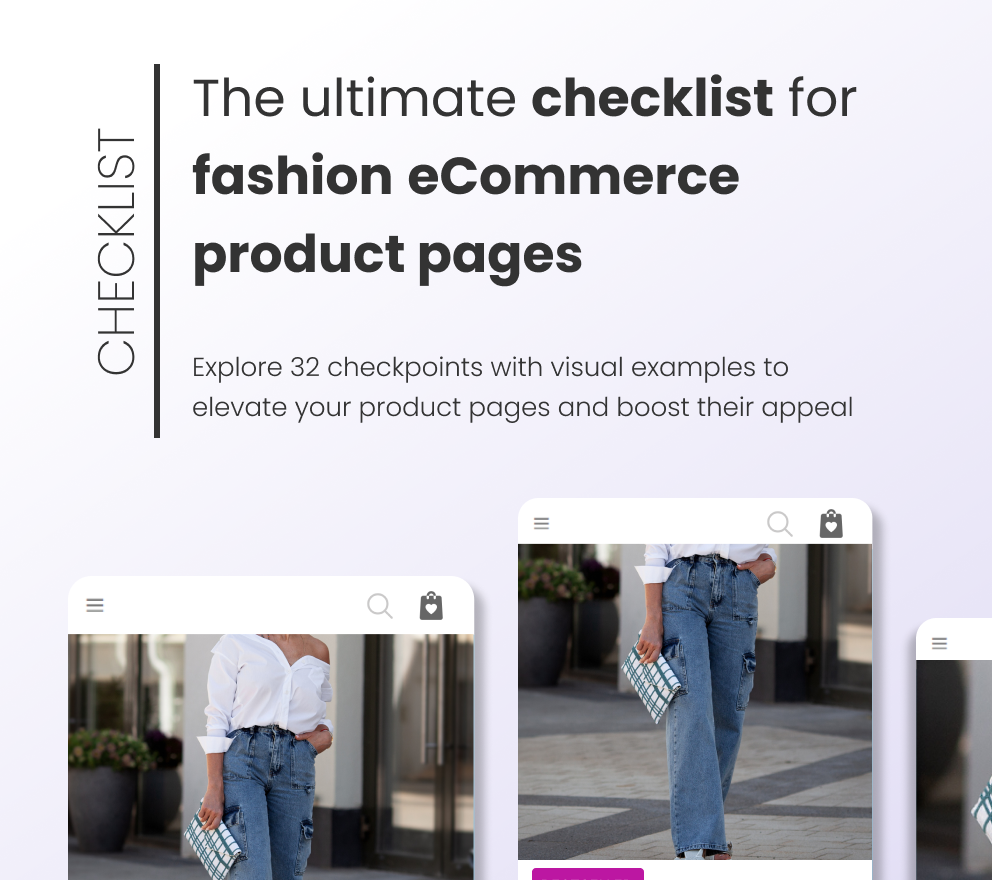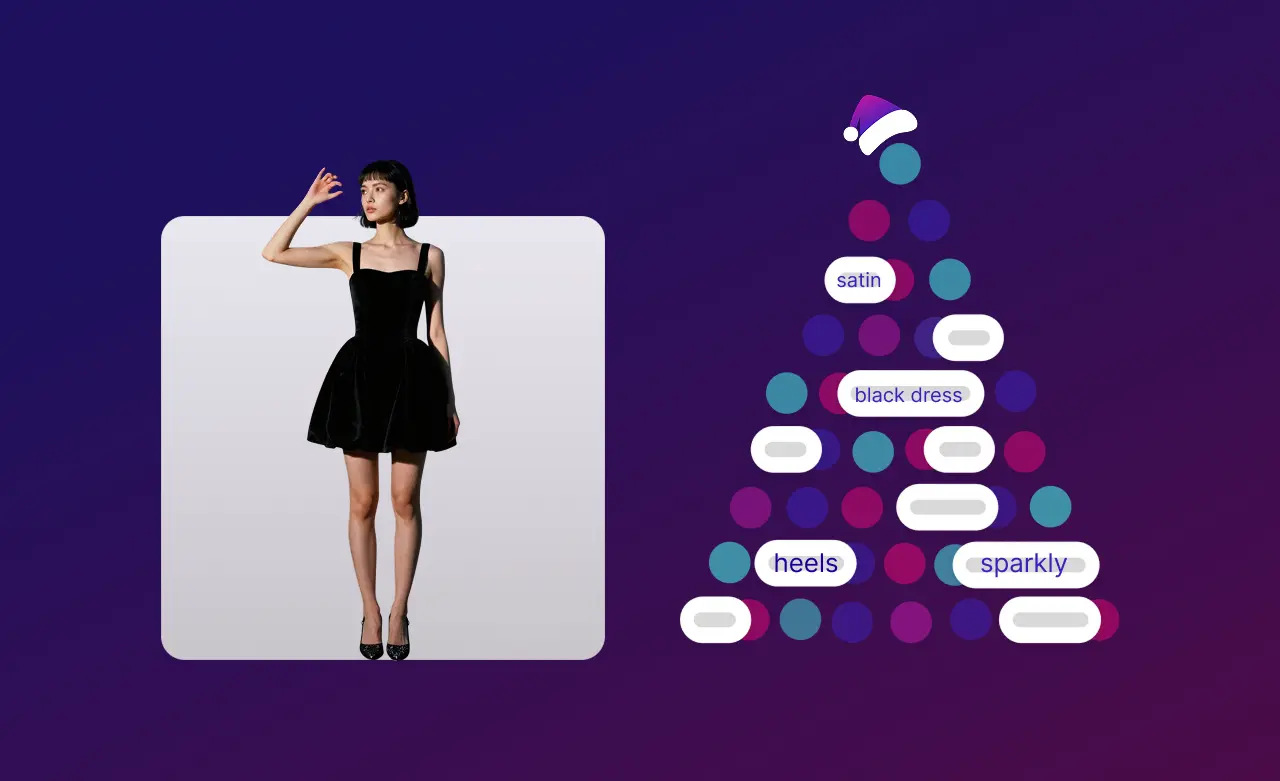From Clicks to Conversions: Top 4 Strategies for Optimising Product Detail Pages in Fashion E-commerce
.webp)
The content you provide to your buyers directly influences their behaviour. Every potential customer begins their journey to discover, evaluate, and make informed purchase decisions based on content. In fashion e-commerce, Product Detail Pages (PDPs) are where you can grab their attention and guide them toward a purchase. Much like a brick-and-mortar store's display window, a PDP showcases a product’s features, specifications, and nuances, providing shoppers with a virtual hands-on experience.
Research shows that 70% of consumers abandon their cart if PDPs are unclear or incomplete. Effective product detail page optimisation is essential because as the entry point for product discovery, PDPs act as your 24/7 sales team. According to McKinsey, optimised PDPs can increase conversion rates by up to 30%, making these pages crucial for online store success.
As shoppers click their way through online stores, each tap on a Product Detail Page (PDP) holds the promise of a potential sale, making these pages crucial to the success of the fashion online store. These pages are like the heart of online shopping, providing a wealth of carefully selected information tailored to meet the needs of today's savvy shoppers. From eye-catching product pictures to thorough descriptions, pricing details, and customer reviews, PDPs aim to give shoppers a complete picture of the product they're interested in.
What are Product Detail Pages (PDP) in Fashion E-commerce?
A Product Detail Page (PDP) is more than just a static webpage—it's a dynamic tool that connects shoppers with the products they’re interested in. They contain essential information like available colours, sizes, prices, and customer reviews, helping shoppers make informed decisions.
So, why exactly are Product Detail Pages (PDPs) essential in the world of online fashion retail? Because they function as your online store's virtual sales representatives. They provide shoppers with all the necessary details they need to make informed purchasing decisions, all without the need for them to physically visit a brick-and-mortar store.
Now, let's talk about how PDPs have changed over time.
Back in the day, PDPs were pretty basic—they usually just had a couple of pictures and a short description. But nowadays, they're much more than that. They offer a whole personal shopping experience, with interactive features, videos, and even suggestions tailored just for buyers. As technology advances and what shoppers expect evolves, PDPs keep getting better to make the buyers’ online shopping journey even smoother.
Key Elements of a High-Converting Product Detail Page of a Fashion Online Store
When it comes to crafting a PDP that converts browsers into buyers, certain elements are absolute must-haves. Let's break them down:
When it comes to crafting high converting product pages that turn browsers into buyers, certain elements are absolute must-haves. Let's break them down:
Product Images and Videos
Visuals are king in the world of fashion e-commerce. High-quality images and videos give shoppers a clear picture of what they're getting. Multiple angles, close-ups, and even videos showcasing the product in action can help build confidence and trust.
Detailed Product Description
Words matter too! A thorough product description should cover all the bases—features, benefits, specifications, and anything else a shopper might need to know. With it, you have a chance to make a compelling sales pitch without being pushy. Incorporating an AI description generator ensures precision and efficiency in crafting these crucial messages.

Pricing and Availability Information
Transparency is key when it comes to pricing and availability. Clearly listing the price, any discounts or promotions, and whether the item is in stock helps manage expectations and reduces the likelihood of surprises at checkout.
Customer Reviews and Ratings
Social proof is a powerful persuasion tool. Genuine customer reviews and ratings provide valuable insights and reassurance to potential buyers. Positive reviews can boost confidence and credibility, while negative reviews offer opportunities for improvement.

Call-to-Action Buttons
Don't leave your shoppers hanging—guide them towards the next step with clear and compelling call-to-action buttons. Whether it's adding the item to their cart, starting the checkout process, or even sharing the product with a friend, make it easy for them to take action.

Each of these elements plays a crucial role in driving conversions on your PDP. From capturing attention to building trust and ultimately nudging shoppers towards making a purchase, detail product optimisation ensures that all aspects work together to create a seamless and satisfying shopping experience, which aligns with PDP best practices.
Best Practices for Optimising Product Detail Pages
Let's explore some product detail page best practices for PDP optimisation.
Using AI for Quick Optimisation
If you thought that Artificial Intelligence (AI) could be implemented only in sci-fi movies, you couldn’t be more far away from the truth. AI for fashion actually is a game-changer in fashion e-commerce and online shopping. AI-powered tools can analyze user behaviour, personalize content, and even predict shopper preferences, making PDP optimisation smarter and more effective than ever.
Real-life example:
If you run a fashion e-commerce store that offers a wide range of clothing items, from casual wear to formal attire by implementing AI-powered tools, such as recommendation engines, you can analyse your customers' browsing and purchase history. For instance, if a shopper frequently purchases dresses with floral patterns, AI algorithms can suggest similar items or complementary accessories, improving the personalised shopping experience.

Discover Pixyle Ultimate Dress type Taxonomy Guide
The Ultimate Product Page Checklist for Fashion E-Commerce
Learn how to structure your catalog in a way that matches how people actually shop.
Discover best practices to create compelling high-converting product pages.


Boost your sales with AI product tagging
The Ultimate Product Page Checklist for Fashion E-Commerce
Optimize your eCommerce catalog to improve discovery and conversions.
Discover best practices to create compelling high-converting product pages.







